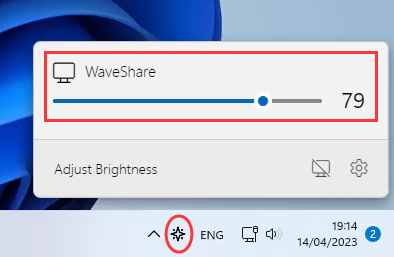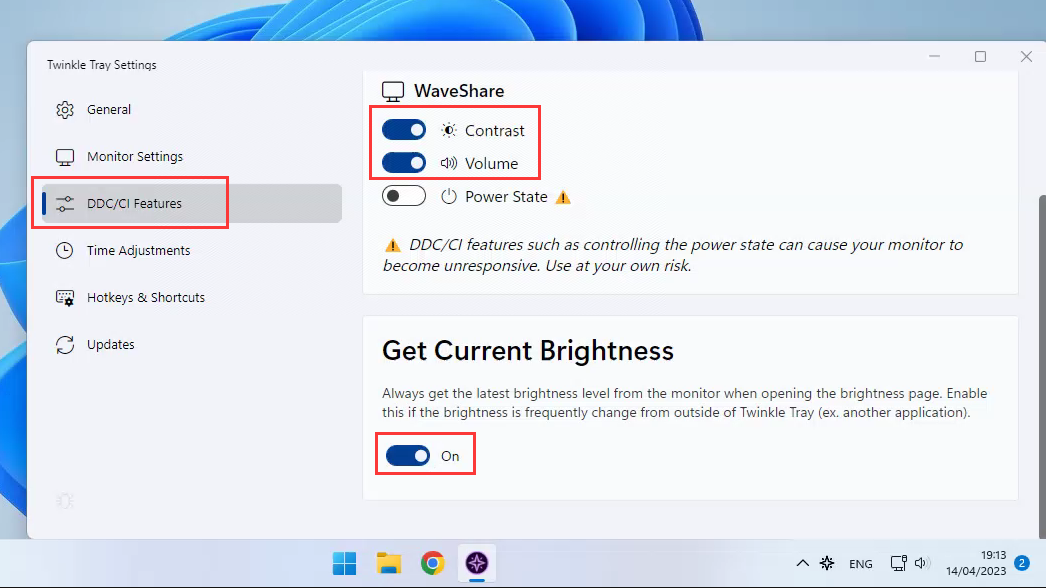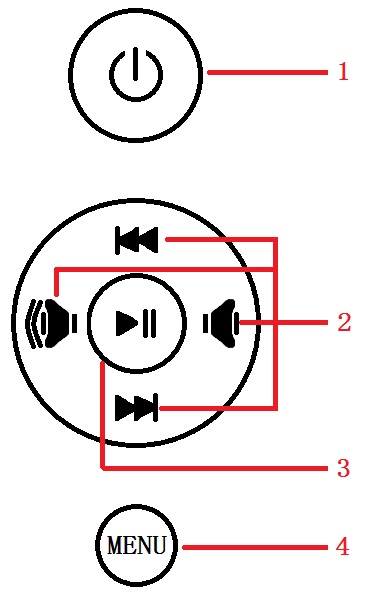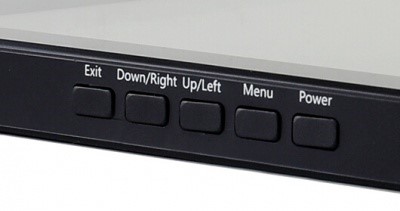13.3inch HDMI LCD (H) (with case)
Overview
Introduction
13.3inch IPS screen, 1920 x 1080 high resolution. Toughened glass cover. Supports Raspberry Pi and can also be used as a computer monitor.
Features
- 13.3inch IPS screen,1920 x 1080 high resolution.
- Toughened glass capacitive touch panel, 6H hardness.
- When works with Raspberry Pi, supports Raspberry Pi OS / Ubuntu / Kali and Retropie systems.
- When working as a computer monitor, supports Windows 11/10/8.1/8/7, 10-point touch.
- Multi-language OSD menu, for power management, brightness/contrast adjustment, etc.
- 3.5mm audio jack, supports HDMI audio output.
- Embedded ferrite Hi-Fi speaker(no need for external speakers).
- Also supports VGA input (specific cable is required and should be purchased separately).
- 100 x 100mm spacing mounting holes (M4 screw hole) for mounting on the wall.
- Comes with 60° tilt angle stand.
Note: The version without a case doesn't have VGA input and related stand function.
video
Working with PC
This product supports Windows 11/10/8.1/8/7 OS.
1. Connect the 12/1A power adapter to the DC interface of the LCD, connecting the backlight will light.
2. Connect the TOUCH interface of the LCD to the USB interface of the PC. Waiting for a moment, The touch will be recognized by Windows automatically.
3. If you use HDMI, you need to connect the HDMI interface of the LCD to the HDMI port of the PC. About 5s later, you can see that the LCD displays properly. If you need the audio, you can insert 3.5mm earphones into HP ports.
4. If you need to use VGA communication, you need to connect the VGA interface of LCD to the PC's VGA ports by Mini HDMI to VGA Cable.
Note:
1) If multi-screen are connected to one PC at the same time, you can only control the cursor by this LCD, it is recommended to set the LCD as the main screen.
2) Some of the PCs cannot support the HDMI screen Hot Plug. In this case, restarting the PC may solve.
3) HP audio output only works while using HDMI communication.
4) Mini HDMI to VGA Cable is necessary and needs to be purchased separately if you use VGA communication.
Windows Software Dimming
- 1. Download and install the DDC/CI application, for example, the open-source Twinkle Tray.
- 2. Open the software dimming icon, it will recognize the Waveshare monitor and adjust the monitor backlight brightness by sliding the scroll bar.
- 3. You can also enter the DDC/CI application settings interface to enable contrast adjustment, volume adjustment, and other functions.
Working with Raspberry Pi
Supports Raspberry Pi OS / Ubuntu / Kali and Retropie systems on Raspberry Pi.
Please download the latest version of the image from the Raspberry Pi official website.
1. Download the compressed file to the PC, and extract the img file.
2. Connect the TF card to the PC and use SDFormatter to format the TF card.
3. Open the Win32DiskImager software, select the system image prepared in step 1, and click write to burn the system image.
4. After the programming is completed, open the config.txt file in the root directory of the TF card, add the following code at the end of config.txt, and save it.
hdmi_group=2 hdmi_mode=82 hdmi_cvt 1920 1080 60 6 0 0 0
5. Connect the 12V power supply to the DC interface of the LCD, and you can see that the LCD backlight is lit normally.
6. Connect the Touch port of the LCD to the USB port of the Raspberry Pi.
7. Connect the HDMI port of the LCD to the HDMI port of the Raspberry Pi, power on the Raspberry Pi, and wait for a few seconds to display normally.
Linux Software Dimming
- Using the DDC/CI demo, here we take the ddcutil tool as the example:
#Install ddcutil tool: sudo apt-get install ddcutil -y #Detect whether it supports DDC/CI monitors: sudo ddcutil detect #Adjust the monitor brightness, <value> needs to modified as 0-100. sudo ddcutil setvcp 10 <value>
For more ddcutil function commands, you can refer to http://www.ddcutil.com/commands/.
Keys description
- 13.3inch HDMI LCD (H) (with case)
- 1: Open or Close LCD display. If you don't need the LCD for a long time, you can use this button to reduce your consumption.
- 2: Direction button.
- 3: "OK" function.
- 4: Open the menu and the "Return" function.
- Power: Turn on/off LCD.
- Menu: Open OSD Menu/OK.
- Up/Left: Direction buttons.
- Down/Right: Direction buttons.
- Exit: Return.
Resource
3D Drawing
- 13.3inch HDMI LCD (H) & 13.3inch HDMI LCD (H) (with case) & 13.3inch HDMI LCD (H) V2 (with case) 3D Drawing
- CE RoHS certification
Software
FAQ
Add the following command to /boot/config.txt:
disable_splash=1
{{{5}}}
Replace the custom image with the image in this directory /usr/share/plymouth/themes/pix/splash.png.
{{{5}}}
Test environment: 2022-04-04-raspios-bullseye-armhf 32-bit system
Supported models: Support Waveshare DSI LCD, DPI LCD, and HDMI LCD capacitive touch screen series.Only support 32bit system
Software Installation
wget https://files.waveshare.com/upload/1/18/Evdev-right-click-emulation.zip unzip Evdev-right-click-emulation.zip cd evdev-right-click-emulation sudo apt install build-essential libevdev2 libevdev-dev cd 'evdev-right-click-emulation' sudo cp 'out/evdev-rce' '/usr/local/bin/' sudo chmod +x '/usr/local/bin/evdev-rce'
Enter the command:
sudo evdev-rce
After running, you can touch and long press to realize the right-click function.
Set IP
sudo usermod -G 'input' -a pi echo 'uinput' | sudo tee -a /etc/modules sudo nano /etc/udev/rules.d/99-uinput.rules
Add in 99-uinput.rules file.
KERNEL=="uinput", MODE="0660", GROUP="input"
save it and run it in the terminal.
sudo udevadm control --reload-rules sudo udevadm trigger
Then reboot:
sudo reboot
Run after reboot (no sudo needed at this point).
evdev-rce
After running, you can touch and long press to realize the right-click function.
Set Startup
Enter the terminal:
sudo mkdir ~/.config/autostart sudo nano ~/.config/autostart/right_click.desktop
Add the following in right_click.desktop.
[Desktop Entry] Version=1.0 Type=Application Name=evdev-rce GenericName=Enable long-press-to-right-click gesture Exec=env LONG_CLICK_INTERVAL=1000 LONG_CLICK_FUZZ=200 /usr/local/bin/evdev-rce Terminal=true StartupNotify=false #If you want to modify the sensitivity, you can modify the size of the two parameters, LONG_CLICK_INTERVAL=1000 LONG_CLICK_FUZZ=200.
{{{5}}}
60Hz
It depends on the system, if the system has hibernation, the screen will also be black. If it is the official system of Raspberry Pi, the default is about ten minutes without action to have hibernation.
{{{5}}}
Remove the triode shown in the figure below, and solder the PWM pin on the pad indicated by the arrow on the right.

Execute the following command on the Raspberry Pi terminal:
gpio -g pwm 18 0 gpio -g mode 18 pwm (occupied pins are PWM pins) gpio pwmc 1000 gpio -g pwm 18 X (X ranges from 0 to 1024), 0 is the brightest, 1024 is the darkest
12V 1A outer diameter 3.5 and inner diameter 1.35. If you want to use other power supplies, you need to ensure that the power supply ripple is within ±5%
Support
Technical Support
If you need technical support or have any feedback/review, please click the Submit Now button to submit a ticket, Our support team will check and reply to you within 1 to 2 working days. Please be patient as we make every effort to help you to resolve the issue.
Working Time: 9 AM - 6 PM GMT+8 (Monday to Friday)




